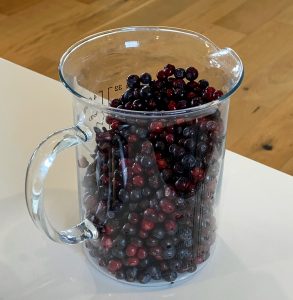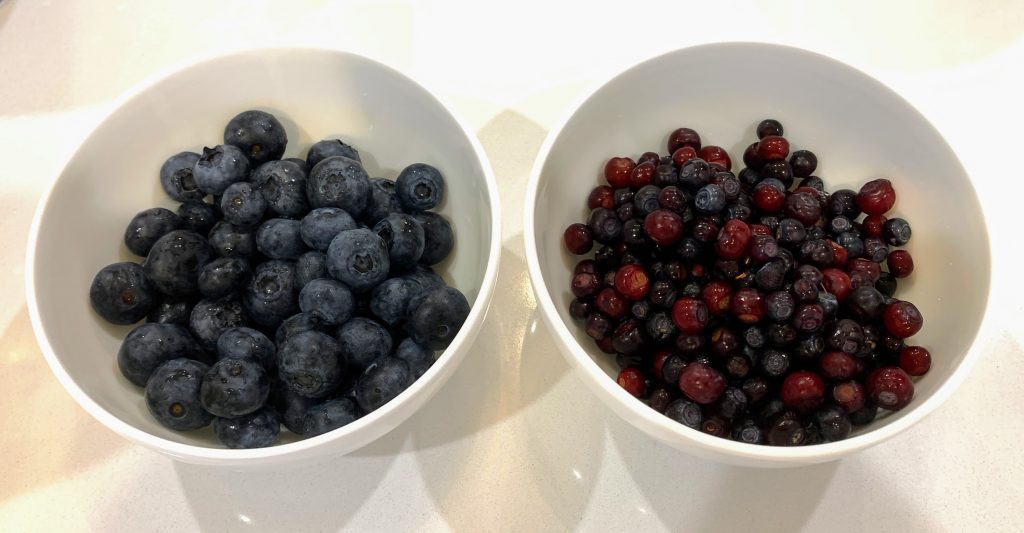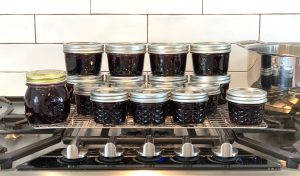It’s huckleberry season! Huckleberries ripen beginning in late July. And since huckleberries resist cultivation, they have to be picked in the wild from bushes that grow on mountain slopes.
In Idaho and Montana, huckleberry foraging locations are traditionally family secrets. I was permitted to accompany one expedition to a patch just off a dirt road deep in Forest Service land at 6,600 feet elevation.

Picking huckleberries is not easy: The bushes are low to the ground, the sparse berries tend to form under the leaves, and even when fully ripe the small berries do not easily detach. An hour of concerted picking yields dark purple fingertips and only about three cups of huckleberries (which reduce to just two cups when crushed).

What’s the attraction? Huckleberries have a taste along the same axis as blueberries, and blackberries, but the flavor is far more intense than that of similar fruit.

Huckleberries are often canned as jam and syrup. I helped can a traditional jam recipe that cooks equal parts berries and sugar, plus some pectin. The result was a precious product that we canned in 4-ounce jars. Given the strength of the huckleberry’s flavor I thought that recipe was excessively concentrated. So for a second batch I added crushed cultivated (i.e., large and relatively flavorless) blueberries in equal part to huckleberries; reduced the sugar by 20%, and canned the jam in 8-ounce jars. Informal blind taste tests concluded that my modification did not diminish the product.
